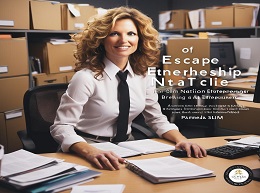The Art of Community

Cultivating Connection Through Community
In "The Art of Community" by Charles Vogl, readers are introduced to the transformative power of building strong and inclusive communities. This review delves into the key insights and practical techniques outlined in the book, supplemented with engaging examples to illustrate their application in diverse contexts.
Understanding the Essence of Community: A Foundation for Connection
Vogl begins by exploring the essence of community, emphasizing the importance of shared purpose, values, and belonging in fostering connection and collaboration. By understanding the fundamental elements that define a community, individuals and organizations can create environments that nurture trust, empathy, and mutual support. For example, the Ubuntu philosophy, "I am because we are," embodies the interconnectedness and interdependence at the heart of community-building efforts worldwide.
The Art of Leadership: Inspiring Engagement and Empowerment
Central to Vogl's approach is the role of leadership in cultivating thriving communities. Effective community leaders possess the ability to inspire engagement, empower others, and foster a sense of ownership and accountability among members. By leading with authenticity, empathy, and vision, leaders can create environments where individuals feel valued, heard, and empowered to contribute their unique talents and perspectives. For instance, the leadership style of Nelson Mandela during South Africa's transition to democracy exemplified the transformative impact of inclusive and visionary leadership on community cohesion and resilience.
Creating Spaces for Connection: Designing for Inclusivity and Belonging
Vogl emphasizes the importance of creating physical and virtual spaces that facilitate connection, collaboration, and belonging. Whether it's a neighborhood park, a coworking space, or an online forum, the design of community spaces plays a crucial role in shaping interactions and fostering a sense of community identity and pride. For example, the High Line in New York City transformed a disused railway into a vibrant public space that brings together diverse communities, fostering social interaction, and cultural exchange.
Nurturing Relationships: Building Trust and Resilience
At the heart of every strong community are trusting and supportive relationships among members. Vogl explores strategies for nurturing these relationships, from practicing active listening and empathy to fostering a culture of appreciation and celebration. By prioritizing authentic connections and investing in relationship-building efforts, communities can weather challenges and setbacks with resilience and cohesion. For example, the mutual support networks formed in response to natural disasters like Hurricane Katrina demonstrate the power of community solidarity and collective action in times of crisis.
Amplifying Impact: Leveraging Collective Action for Change
Vogl highlights the potential of communities to drive positive change and impact beyond their immediate boundaries. By mobilizing collective action around shared goals and values, communities can effect meaningful change in areas such as social justice, environmental sustainability, and economic development. For example, the #MeToo movement mobilized individuals around the world to speak out against sexual harassment and assault, sparking a global conversation and driving systemic change in workplaces and institutions.
Building Bridges, Fostering Connection
"The Art of Community" offers a compelling vision for building strong, inclusive, and resilient communities that enrich the lives of their members and drive positive change in the world. By understanding the essence of community, cultivating inclusive leadership, creating spaces for connection, nurturing relationships, and leveraging collective action, individuals and organizations can harness the transformative power of community to create a more just, equitable, and compassionate world.













